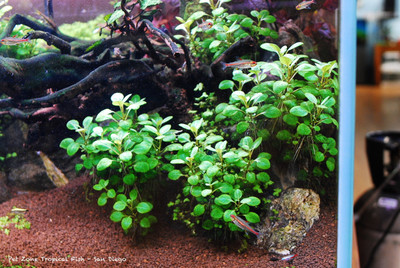Lobelia Cardinalis: Unveiling the Cardinal Flower
Posted by Max Gandara on on 26th Oct 2023
The Lobelia Cardinalis, commonly known as the Cardinal Flower, is a
striking native perennial plant that captivates gardeners and nature
enthusiasts with its vibrant scarlet blooms and attractive foliage. This
plant, part of the Campanulaceae family, is native to North America and
is known for its brilliant, cardinal-red flowers that adorn the edges
of water bodies, moist woodlands, and garden landscapes. In this
article, we'll explore the various facets of Lobelia cardinalis, from
its botanical characteristics to its ecological significance and
cultivation.
Lobelia cardinalis is a herbaceous perennial plant that typically grows
to a height of 2-4 feet (60-120 cm). Its lance-shaped leaves are deep
green, often tinged with purple, creating an attractive contrast against
the vibrant red flowers. The flowers are tubular and have two lips, a
characteristic feature of the Lobelia genus. They form dense spikes,
adding vertical interest to the plant.
The stunning cardinal-red flowers, from which the plant derives its
common name, are produced in the late summer and early fall. These
flowers are highly attractive to pollinators, particularly hummingbirds,
which are known to be the primary pollinators of Lobelia cardinalis.
The red hue of the blossoms is not only visually appealing but also a
clear signal to these birds.
Lobelia cardinalis plays a crucial role in supporting local ecosystems.
As a native plant, it is well-adapted to the regions in which it grows.
One of its most significant ecological contributions is its ability to
attract and support pollinators. The tubular shape of the flowers, rich
nectar content, and bright red color make them irresistible to
hummingbirds and butterflies. In doing so, they help in the pollination
of the plant, facilitating seed production and genetic diversity.
Moreover, Lobelia cardinalis is often found in wetland habitats, such as
the edges of ponds, streams, and marshes. Its deep-rooted nature aids
in stabilizing soil, reducing erosion, and improving water quality in
these ecosystems. It also provides habitat and sustenance for a variety
of wildlife.
For gardeners, Lobelia cardinalis is a prized addition to moist or wet
areas of their landscapes. Here are some tips for its successful
cultivation:
1. **Site Selection:** Choose a location with consistently moist,
well-draining soil. This plant thrives in full to partial sun but can
tolerate some shade.
2. **Planting:** Plant Lobelia cardinalis in the spring or early summer.
Ensure proper spacing, as they can grow quite large and crowded plants
may become prone to diseases.
3. **Watering:** Keep the soil consistently moist. The cardinal flower
is adapted to wet habitats, so regular watering is essential, especially
in drier climates.
4. **Mulching:** Apply mulch around the base of the plant to help retain soil moisture and suppress weeds.
5. **Pruning:** Deadhead faded flowers to encourage prolonged blooming
and prevent self-seeding. Cut back the plant in late fall or early
spring to promote healthy growth.
6. **Pests and Diseases:** Lobelia cardinalis is relatively resistant to
pests and diseases, but slugs and snails can be a concern. Use organic
pest control methods if necessary.
7. **Overwintering:** In colder climates, consider providing some winter
protection with mulch or a layer of leaves to protect the roots from
freezing temperatures.
Lobelia cardinalis, or the Cardinal Flower, is a spectacular native
plant with bright red flowers that are not only a treat for the eyes but
also play a vital role in supporting local ecosystems. Gardeners and
nature enthusiasts alike can enjoy its beauty and ecological
contributions by carefully selecting its planting site, providing the
right care, and appreciating the hummingbirds and butterflies it
attracts. With Lobelia cardinalis, one can effortlessly bring a touch of
the wild into their garden while simultaneously promoting biodiversity
and ecological health.

